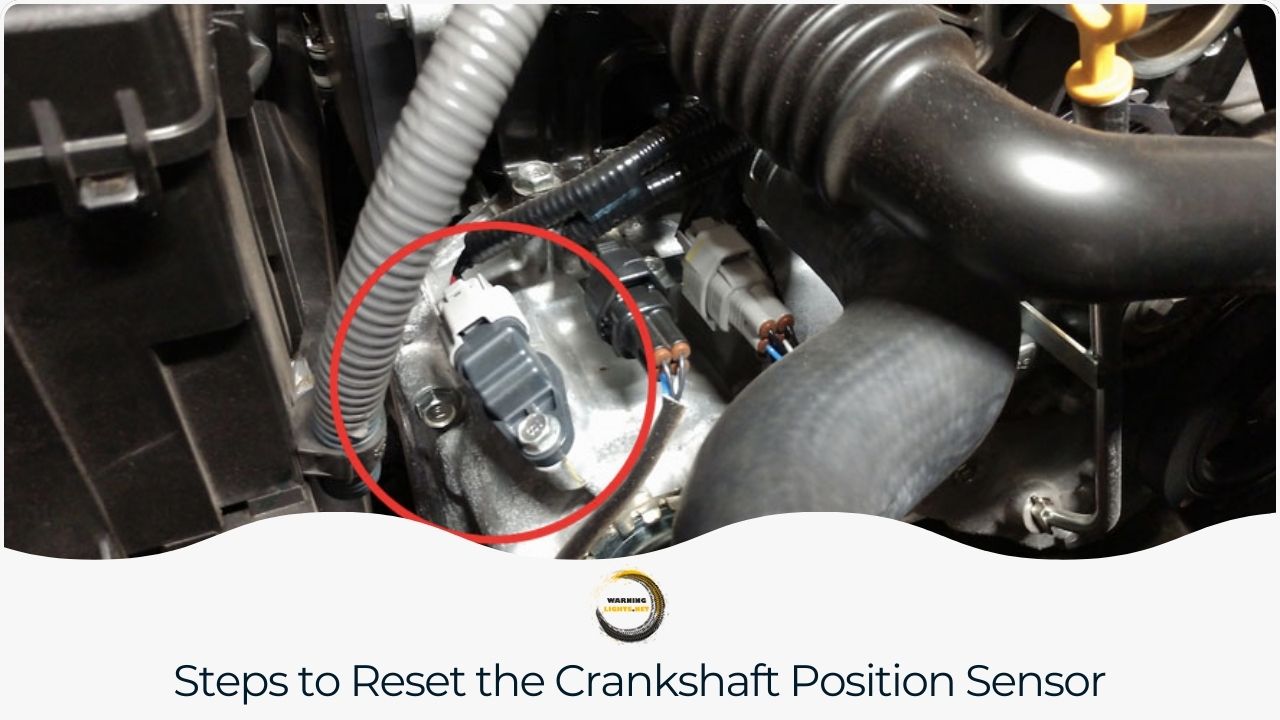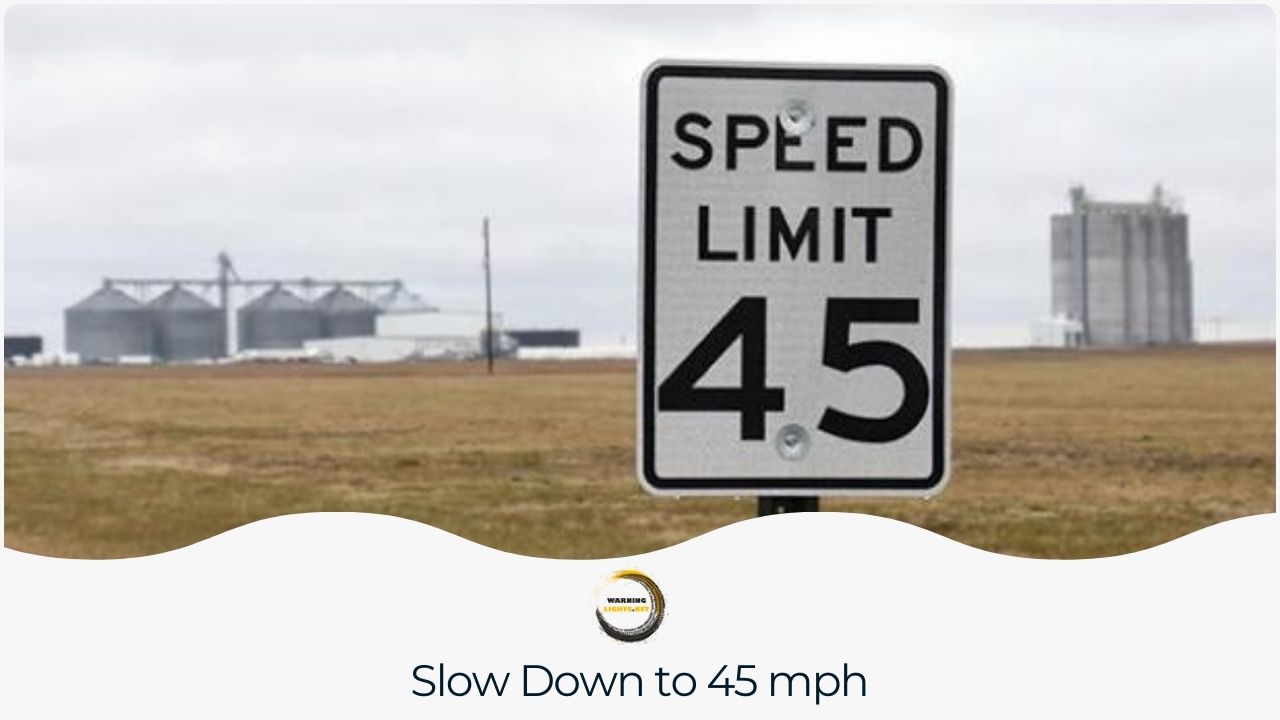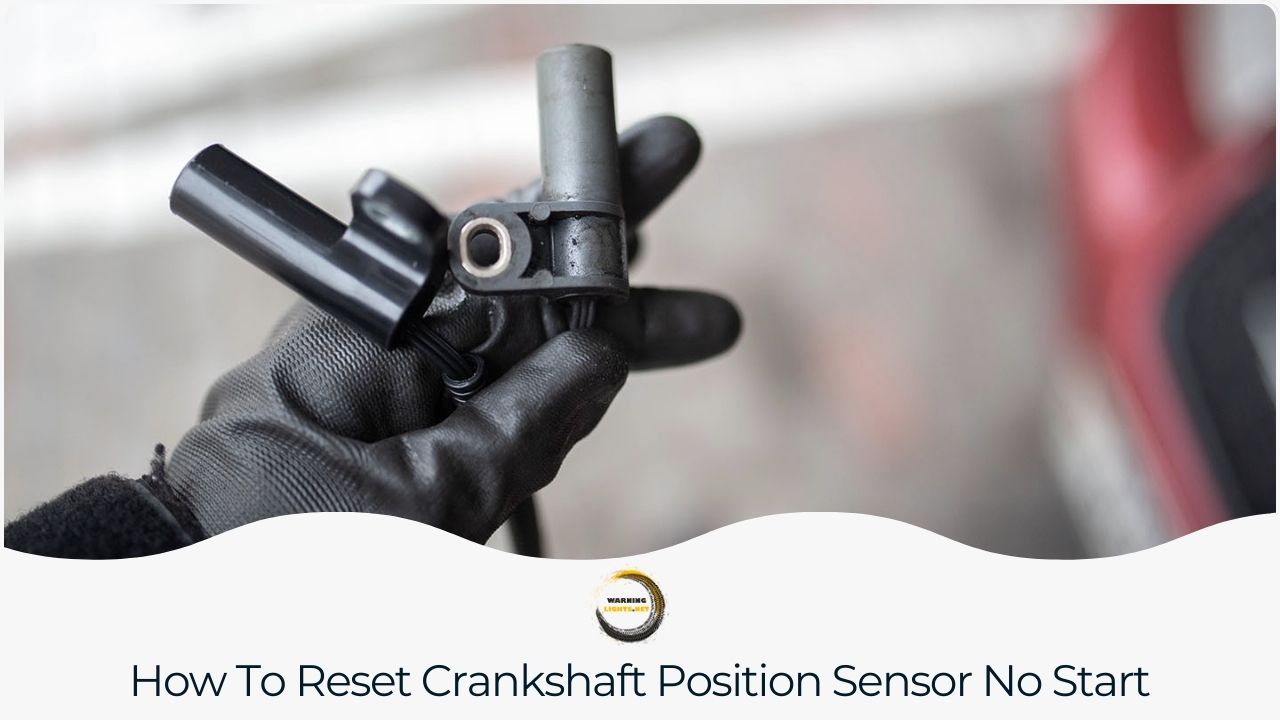Resetting and reprogramming the system after installing a new crankshaft position sensor is crucial. This ensures detecting and managing any potential misfires, which could activate warning lights or indicate problems, thus guaranteeing a safer driving experience.
The crankshaft position sensor in your engine monitors the crankshaft’s position, sending this information to the engine control unit (ECU). This allows the ECU to adjust engine functions accordingly.
When the crankshaft position sensor fails, starting the engine can be difficult, acceleration may be poor, and fuel efficiency may be significantly lower.
Steps to Reset Crankshaft Position Sensor

To reset a malfunctioning crankshaft position sensor, follow these instructions:
- Ensure all vehicle accessories are turned off.
- Accelerate to 55 mph.
- Maintain a partial throttle.
- Slow down to 45 mph without coming to a stop.
- Continue driving at 45 mph for a brief period.
Detailed guidance is provided later in this article for those unfamiliar with these procedures.
1. Turn Off All Vehicle Accessories
A faulty crankshaft position sensor can cause starting issues or uneven idling. This sensor is crucial for monitoring your crankshaft’s rotation speed.
Failure of this sensor can activate the check engine light, indicating performance and safety concerns, and may result in engine stuttering.
Resetting the sensor and clearing all related error codes should take 10 minutes.
You’ll need to turn off all accessories and the fuel system to do this. You might also disconnect the ignition wires from the coil and distributor.
Ensure the scanner you’re using has no physical damage and follow the instructions carefully to avoid the faulty sensor, which would require its replacement.
Clearing all error codes from your reader is a vital step. After clearing, connect it to your vehicle’s computer for additional support.
If you encounter a DTC P1336 Crank Relearn Variation Not Learned signal, the scanner’s Crank Relearn function is active and ready to complete relearning. This step will prioritize the CKP sensor for relearning. If unsuccessful, repeat the steps until the sensor is fully relearned.
2. Accelerate to 55 mph
Resetting your car’s crankshaft position sensor can solve issues like difficulty starting or an illuminated check engine light. It clears all stored errors and syncs data, eliminating no-start conditions.
To reset, turn off all accessories and speed up to 55 mph, maintaining this speed for 5-6 minutes.
Then, allow your vehicle to slow down to 45 mph without braking, keeping it steady for a minute. Repeat this four times, with decelerations lasting 25 seconds and 15-second intervals between each.
This process helps the ECU reset its memory, relearn the crankshaft position sensor’s location, and ensure accurate readings.
Issues with the fuel system could arise if the crankshaft position sensor malfunctions, affecting fuel filter and injector operations. This can degrade engine performance and fuel efficiency and even cause stalling during acceleration.
Address these issues promptly to avoid severe engine damage and costly repairs. A skilled mechanic can efficiently fix these problems, ensuring your vehicle’s safety.
3. Maintain Partial Throttle
If you have trouble starting your vehicle, the problem may be a faulty crankshaft position sensor. This sensor is critical in monitoring the crankshaft’s speed and informing the car’s computer of the optimal ignition and fuel injection timing.
This sensor, a combination of a coil and magnet, relays the crankshaft’s rotation speed to the PCM, enabling precise engine start and fuel delivery timing.
A malfunctioning sensor can cause an engine to misfire, activate the check engine light, or lead to rough idling or shaking.
Solving this issue may involve reprogramming the sensor, a task best handled by professionals for accuracy, or fixing or replacing the sensor, depending on the severity of the malfunction.
Reprogramming is straightforward, with a scan tool connected to the diagnostic port following prompts to recalibrate the sensor.
If problems persist after these steps, it could indicate a more serious issue that needs expert repair. If you are less experienced with electrical maintenance, it is advisable to consult a competent mechanic to find and implement the best solution.
4. Slow Down to 45 mph

If you’re facing issues with the crankshaft sensor and can’t use a scanner for a reset, manual steps that work for most vehicles are available to get you back on track quickly.
To manually reset the sensor, turn off all extra features and accelerate to 55 mph, keeping a steady throttle. Maintain this speed for about 5-6 minutes.
Then, let your speed drop to 45 mph without braking, holding it for a minute. Alternate between slowing down and speeding back to 55 mph, maintaining each speed for several minutes.
This method should effectively reset the CPS. If it doesn’t, it indicates a deeper problem in your system, and seeking professional help is advisable.
Alternatively, another method is using a scanner to clear any sensor-related errors and aid in learning the new sensor settings. Scanners can also pinpoint other ECU issues or help with camshaft sensor relearning, though following precise instructions is crucial.
If you need more clarification about handling this process or find it daunting, visiting a mechanic might be your best bet. Yet, you could also resolve the issue by trying it yourself.
5. Continue Driving at 45 mph
The crankshaft position sensor is vital for the engine, providing the ECU with necessary data on vehicle speed and positioning, which informs fuel injection and ignition timing. A malfunctioning sensor can lead to significant powertrain problems.
To reset a crankshaft position sensor that is not starting, deactivate all accessories and accelerate to 55 mph. Then, for a few minutes, reduce your speed to 45 mph. This helps the engine adjust to its optimal temperature, relearn the crankshaft sensor position, and clear any stored errors.
During this process, you must maintain a speed of 45 mph to allow the system to synchronize data effectively. After reinstalling the CPS, your vehicle should operate smoothly without further issues from the sensor.
Should this method not rectify the issue, it might be due to faulty wiring connections or the sensor itself, necessitating professional intervention. Whether using a scanner or manually relearning the sensor, the steps are straightforward but may require time to execute correctly.
In Summary
Successfully resetting the crankshaft position sensor’s no-start problem can be achieved using the CKP Variation Learn function with a scanner or through manual acceleration and deceleration cycles. However, if the vehicle’s computer resists relearning efforts, immediate professional help is advised to prevent potential engine damage.
